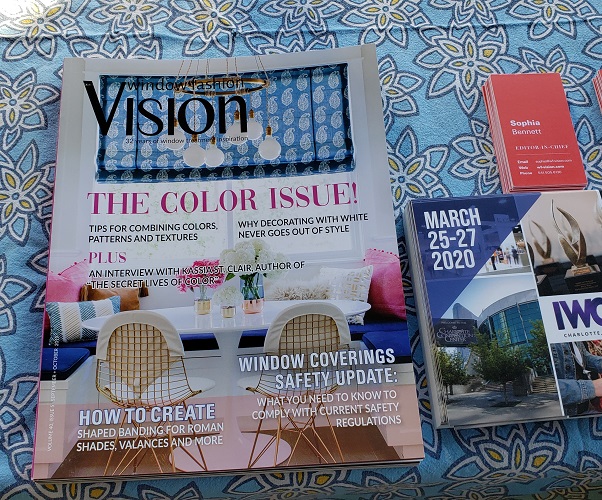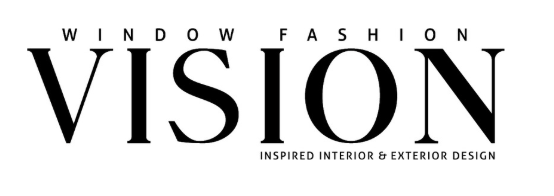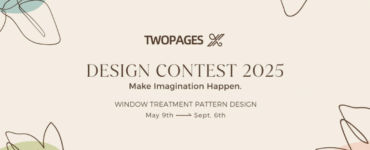On Friday, November 1, the Interior Design Society chapter in Portland, OR, hosted “Elevate: Take Your Business to the Next Level.” This one-day conference had a power-packed lineup of presenters, including LuAnn Nigara, host of the podcast “A Well-Designed Business” and Window Fashion VISION columnist; coach and body language consultant Nancy Ganzekaufer; and Brandon Gaston, a local TV personality and founder/creative director for LifeSTYLest, a Northwest-based lifestyle branding agency.
These speakers packed in so much information that attendees’ heads were spinning by the end of the day. It would be impossible to succinctly sum up their talks, so we’re settling for sharing seven particularly prescient tips that stood out to us.

Tip #1: Don’t Just Write Down the Tips-Write Down the Actions You Will Take
In her enthusiastic opening presentation, LuAnn Nigara gave attendees some advice on how to formulate a game plan for implementing the great advice they received-before the day even ended. “When you write down that ‘a-ha’ moment, also write down what you’re going to do about it,” she advised. Jotting down action items next to tips will help those things stand out and make follow-up action more likely.
Tip #2: Marketing Money!
Nigara spent quite a bit of time talking about the importance of always doing the right thing for the customer. It’s hard not to cringe when “doing the right thing” means paying to refabricate a treatment ordering a different product or having the installer make extra trips to a home.
“I don’t like doing it any more than you do,” she confessed. But to soften the blow, the staff at Window Works calls these investment “marketing money.” It may cost $1,000 to make a client happy, but it’s well worth doing because it gives you a client for life. This person will also become your best word-of-mouth marketer and send clients your way at no additional cost to you.
Some of this marketing money could also be put to better use through other methods as well such as social media or website marketing. Using things like search engine optimization (check out this guide) can help to increase online traffic to your website and get more clients. This is why you should never underestimate the power of a good online marketing campaign. If you are new to digital marketing, you might find the terms such as ‘SEO’ and ‘optimization’ quite intimidating. But, when you have the help of professionals like the ones at SERP Co (a chicago seo company) you do not have to worry about the technicalities of digital marketing. Digital marketing professionals have the resources to study your field and engineer your website to perform well in search results. This way, you can expect more customers as these experts make use of some of the best local seo software. Local SEO can positively change your business as it can increase traffic from search engines based on geo-located searches by customers.
Tip #3: The “Why” Is Your Superpower
So many designers struggle to gain the confidence to charge what they’re really worth. It’s not like I’m a brain surgeon with a specialized skill that no one else has, it’s easy to think. But Nigara carried that metaphor forward. What if you went to a doctor complaining of aches and pains, and the doctor said, “I can tell there’s something wrong with you, but I don’t know what.” You would never go back. You go to a doctor because a doctor knows why you don’t feel good-and if they don’t know, they have the resources to help you figure out what’s wrong.
The same is true of designers. Most people can walk into a room and know it doesn’t look good, but they don’t know why and they don’t know how to fix it. “You know the whys. That’s your superpower!” Nigara said. That ability to look at a space, know what’s wrong and come up with a plan and the resources to fix it is what you’re really charging for. So be sure to charge the full amount for that skill.
However, sometimes the confidence can cause you trouble. Because when you make professional errors, clients might raise damage allegations against you. But having professional liability insurance can protect you and your reputation from such unfortunate liability claims. Remember, such setbacks are part of this career and shouldn’t interfere with you doing a good job later on.
Tip #4: Your Attire Is Your Brand

We’ve all heard terms like “dress for success” and “the clothes make the man.” Brandon Gaston put a more modern spin on the idea that what you wear matters. All of us have a personal brand, whether it’s as a solopreneur, the head of a company or a person working for a firm. Clothing and accessories, he rightly points out, are one of the top indicators of that brand. They’re one of the first ways people will make a judgment about our brand and whether it’s a fit with theirs. An outfit may be the thing people remember about you and the reason they seek you out after an event, either electronically or the next time they see you.
Because of that, how you dress matters. When thinking about your wardrobe, there are two important components to consider. The first is what’s appropriate for your industry. The second is what’s appropriate for your personal brand. If your brand is high-end, you want your clothing to reflect that. If your brand is funky or shabby chic, that should show. If it’s something else, dress to match, as long as it’s also reflective of norms in your industry.
Tip #5: “Brandworking”
Gaston coined the term “brandworking” as a combination of networking and branding. When most small business owners network, they’re looking for two things: clients and industry partners. The way and place to reach those audiences is often different. Approach any event you attend with clarity and intention, he recommended. “Why am I going? Who am I looking for?” And how should you dress and otherwise represent your brand to attract that person?
Tip #6: Watch Your Hands

We’ve all been taught that making eye contact is one of the best ways to connect with a person and show we’re trustworthy. But did you know that what you do with your hands is just as important? According to Nancy Ganzekaufer, the same part of the human brain that interprets faces also looks at hands. It’s a nod to our caveman days, when a person hiding their hands could easily be toting a weapon of some sort.
To convey to clients that you’re trustworthy, give them a firm handshake immediately upon meeting them, and keep your hands where they can see them. Using simple hand gestures will continue to convey trustworthiness as a consultation goes on.
Tip #7: Implementation, Not Information
“Your client doesn’t hire you for information, they hire you for implementation,” Ganzekaufer told the crowd. Again, if you think in those terms, it can be easier to charge a higher fee. The client doesn’t want to just pick your brain; they want you to provide a service that saves them from having to make a million tiny decisions that they don’t want (and don’t know how) to make.
While that is true, your ideas may be the thing that win you a job over another person who can handle implantation. So, charge for all consultations and be free with ideas so the client can see that you really are the person they want.

Thank you to IDS Portland (especially chapter president Beth Clark with B Clark Interior Design, who invited us and is a frequent adviser for the magazine) for welcoming Window Fashion VISION and allowing us to pass out magazines during the day.





